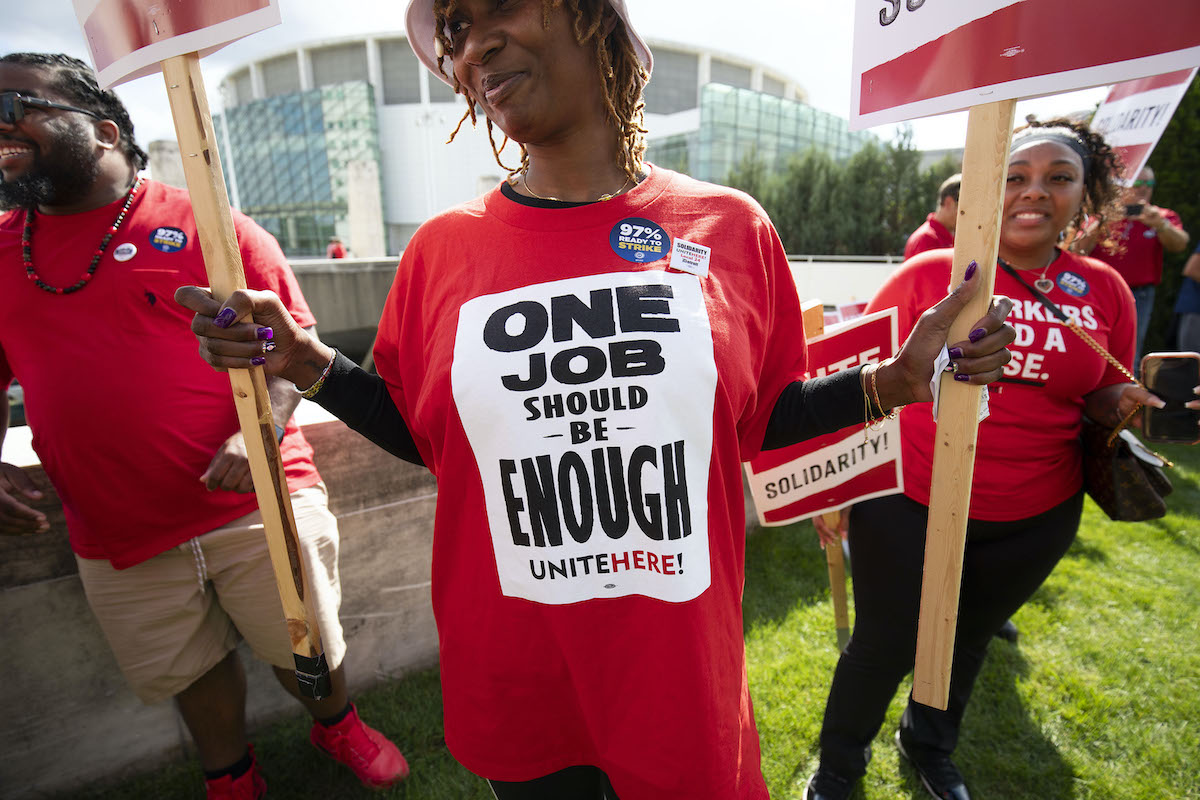Auto Company CEOs Try & Fail To Justify Their $30 Million Salaries Amid UAW Strike

The United Auto Workers, one of the biggest labor unions in the county, is currently on strike against three major car companies: General Motors, Stellantis, and Ford. This is the first time the union has been on strike against all three at the same time. Workers walked out of three plants in Missouri, Michigan, and Ohio on Friday, with union members holding signs and cheering in support.
The UAW current method of striking, called ‘Stand Up’ strikes, is a strategic approach where members walk off targeted plants in certain areas. Altogether, less than 13,000 of the total 145,000 UAW members walked off at the chosen plants: General Motors in Wentzville, MO, Ford in Wayne, MI, and Stellantis in Toledo. Patrick Anderson, CEO of Anderson Economic Group, gave a good succinct explanation of how this strategy seeks to be impactful. “These were chosen carefully by the UAW and reflect a strategy that will ensure a large number of suppliers and dealers are affected, while reducing the number of UAW workers that, at least initially, are on strike and receiving strike pay,” he said, per CNN. This makes sense. Figuring out how to cause enough damage while protecting people seems like a good targeted approach.
But what do the auto companies think? They seem to all believe that their negotiations have been fair. All three have offered union workers double-digit pay increases, which sounds nice until you look at the larger context.
General Motors CEO Mary Barra gave a very interesting interview to CNN. It was noted that the union is seeking a 40% pay increase over four years because the companies—and their CEOs—are making a lot more money. Barra, for example, has received a 34% pay increase and currently makes almost $30 million a year. She responded by saying that 92% of her compensation is based on company performance. Which seems like a pretty great argument for drastically increasing the wages of the people doing the performing.
Many can argue that workers in the actual plants, for instance, are more responsible directly for performance. Most people accept that CEOs will make more than the average worker, but her answers here are the kind of things class warfare is built on.
Meanwhile, Ford’s CEO Jim Farley told CNN that his company couldn’t afford all of the demands that the UAW is making. Stellantis released a statement saying that they were in “contingency mode” and were disappointed in UAW leadership. The offers to UAW initially would have raised hourly wages as much as 20%, which would put the top workers at a rate of $32.32 per hour, adding up to a base pay of about $80,000 a year. Again, great on paper but not nearly enough. (Also remember these CEOs are making $30 million a year.) Per CNN:
But the union started negotiations demanding an immediate 20% raise and four additional raises of 5% each during the life of the contract. It did lower those pay demands late in the negotiations, though apparently not enough to close the gap to the automakers’ offers.
And it also had other ambitious demands meant to reverse concessions that the union agreed to in 2007 and 2009 when Ford was nearly out of cash and GM and Chrysler were hurtling toward bankruptcy and federal bailout.
Top on the union’s hit list of past concessions was a demand to end a lower tier of pay and benefits for workers hired since 2007. While those workers can now achieve the same top hourly pay as the more senior workers, it can take them eight years in the company to reach that level.
This strike, like so many others, is forcing us to rethink profits and consider who is really responsible for “performance.” It is also making us think about changes to how we work in general. CEOs can keep resisting but the tide of labor is turning and showing no signs of slowing down or giving up.
(featured image: Bill Pugliano/Getty Images)
Have a tip we should know? tips@themarysue.com